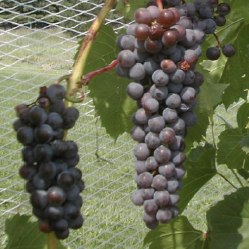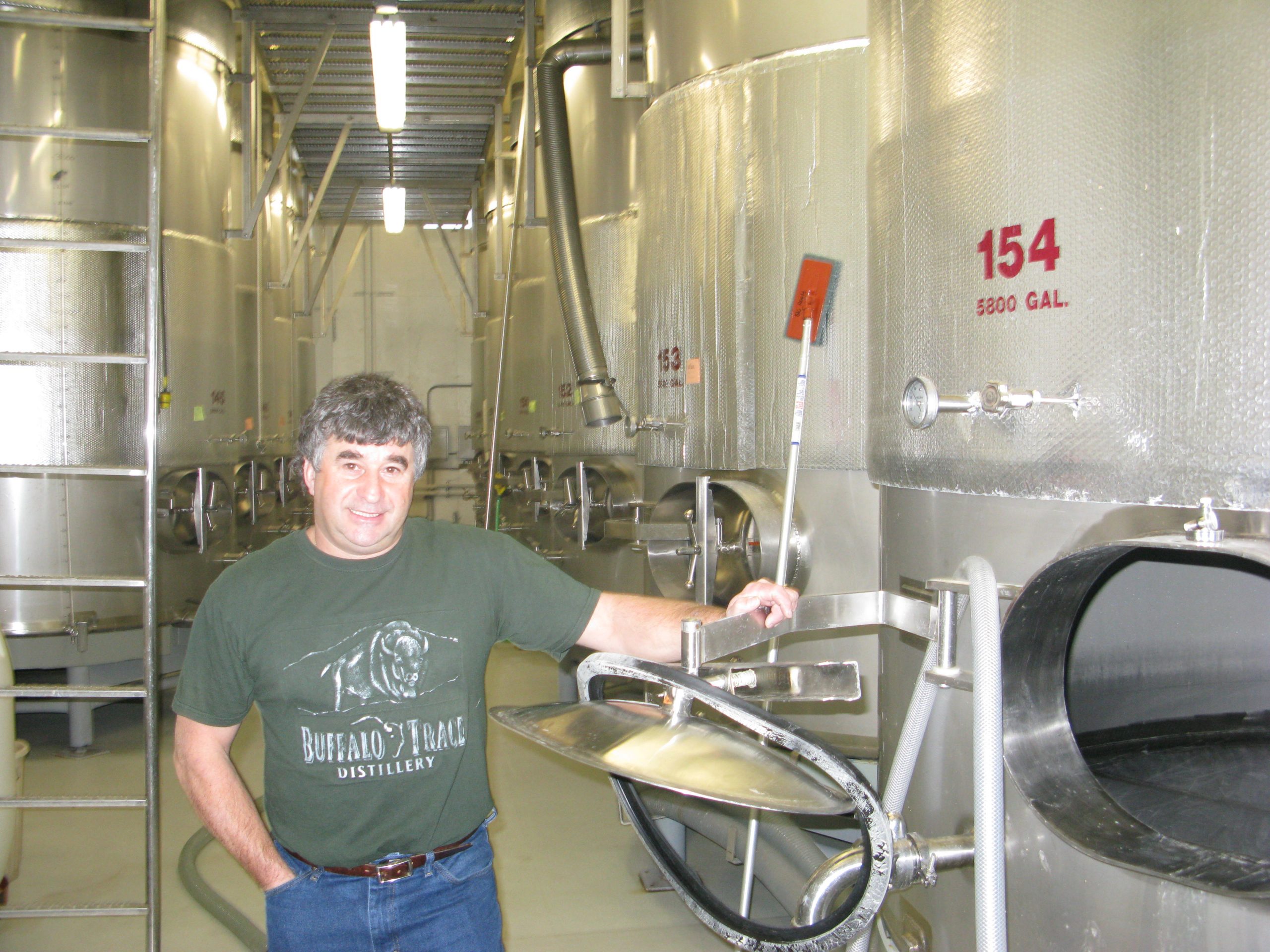Frontenac Gris Grape Moves Beyond Minnesota

Iowa State University
During 1992, a new grape variety was discovered by Peter Hemstad in the vineyard at the University of Minnesota’s Horticulture Research Center. According to Katie Cook, enology project leader at the University of Minnesota, the new grape, called Frontenac Gris, was a single bud mutation of Frontenac berries growing on a vine that normally bears black fruit. ‘We see a lot of Frontenac mutations,” she says. ‘We now have a third Frontenac vine, Frontenac Blanc, because it has mutated again from gray (gris) to white.”
The U of M website states that cuttings were made from the original vine of Frontenac gris, and propagation has spread rapidly since its introduction as a varietal in 2003. The website also states that this variety is usually a good sugar producer, with brix levels around 24-25 common.
Scott Ellenbecker of Round Lake Vineyards in Round Lake, Minnesota grows two acres of Frontenac Gris. ‘It’s the most vigorous variety we have. It puts out a lot of fruit, and is very hardy,” he said. Last year’s harvest produced between seven and eight tons of fruit for Round Lake Vineyards. Ellenbecker’s crop for this year has seen some light freeze damage, but the full impact will not likely be known until next year, he said.
Ellenbecker went on to say that Frontenac Gris usually withstands winter temperatures well. The vines that are growing in Round Lake’s vineyards are used as pollinators for their St. Pepin, and also as an indicator for phylloxera. ‘Phylloxera usually shows up in Frontenac Gris first, so we can keep an eye out for the other vines,” he said.
John Thull, vineyard manager for the University of Minnesota, says that Frontenac Gris vines need time to acclimate, but under “normal” conditions can withstand temperatures of -35F. He believes that this year’s crop should produce good fruit, despite some slight frost damage in April.
To continue reading this post, you must either subscribe or login.[login_form][show_to accesslevel=”annual-membership” ]
Steve Zeller, owner and winemaker at Parley Lake Winery in Waconia, Minnesota says that he makes his Frontenac Gris wine in a semi-sweet to semi-dry style. He likes his grapes to be harvested at 24-25 brix, with titratable acidity (TA) around 9.5 grams per liter. He said that he will harvest late if necessary to get the brix to level off and the TA to drop down. Frontenac Gris at Parley Lake can sometimes end up with over 25 brix, Zeller said.
Zeller puts the grapes through a cold fermentation at 58F for about three weeks, until residual sugar is around 2%. “I believe the long, cold fermentation keeps the aromatics intact much better, and it also helps with the acid balance.” He added that the apricot aroma of his wine and the crisp, fruity flavors are the factors that seem to appeal to his customers.
Tami Bredeson, owner of Carlos Creek Winery in Alexandria, Minnesota, says that their Frontenac Gris is made semi-sweet, and it holds the tropical aromas of the fruit well throughout the bottling process. Carlos Creek blends their Frontenac Gris with another variety called Prairie Star. According to Bredeson, this blend is similar to Riesling. ‘If you like Riesling, give this one a try,” she recommends. Bredeson points out that there appears to be no specific age group that Frontenac Gris appeals to at her winery, and that white wine drinkers in general seem to like this offering.
‘It also makes a really good dessert wine variety, probably because of its high acidity,” Katie Cook said. She also said that it is similar to Riesling in regard to versatility. Frontenac gris can be made into a variety of wines, including sparkling wine, rose, and ice wine, Cook said.
[stextbox id=”custom” caption=”Partial List of Midwest Wineries Making Frontenac Gris Wine:” shadow=”true” float=”true” align=”right” width=”250″]
Weggy Winery, Muscoda, WI
Carlos Creek Winery, Alexandria, MN
Whispering Oaks Winery, Melrose, MN
Northern Vineyards Winery, Stillwater, MN
Richwoods Winery, Callaway, MN
Parley Lake Winery, Waconia, MN
Old Folsom Vineyard, Rapid City, SD
Cellar 426 Winery, Ashland, NE
Fisher King Winery, Mt. Horeb, WI[/stextbox]Tim Rehbein, at the University of Wisconsin extension in Vernon County, agrees that Frontenac Gris is a cold climate, high vigor variety. ‘It does very well in our cold here,” he said. Rehbein also said that Wisconsin growers report that it is doing well in a variety of soils and is usually grown on its own roots rather than being grafted. Rehbein adds that this variety is being grown on a number of different trellis systems including high cordon and VSP (vertical shoot positioning.) According to Rehbein, testing is now underway at UW to determine the best trellis for Frontenac Gris.
Rehbein states that Frontenac gris is a late season grape. He said that for the fruit grown in his area, harvest usually occurs around late September to October. Rehbein says that Frontenac should be left on the vine longer to achieve higher sugar levels and let acid levels come down. ‘The longer it’s left on the vine, the better it is,” he said.
In a profile written by Lisa Smiley at Iowa State University, Frontenac gris is identified as an interspecific hybrid (contains V. vinifera and V. riparia), with small to medium gray berries. The grape clusters are loose and medium in size, with a conical shape.
The University of Minnesota website states that Frontenac gris has peach and apricot aromas, as well as hints of citrus and tropical fruit. Their data also says that the vine of this variety displays the same growth habits as Frontenac and that the same viticulture practices are being used with Frontenac and Frontenac Gris.
[/show_to][password-recovery-link text=’Lost Password? Click here for password recovery.’]
[wp_geo_map]





